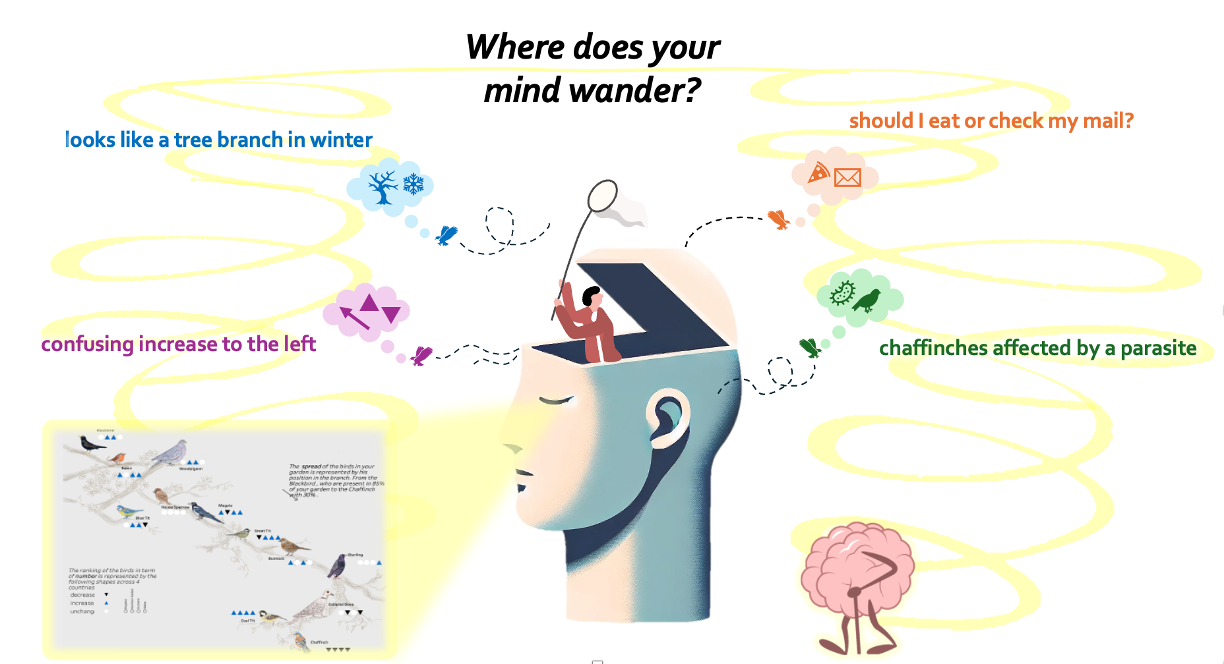Mind Drifts, Data Shifts: Utilizing Mind Wandering to Track the Evolution of User Experience with Data Visualizations
Anjana Arunkumar - Arizona State University, Tempe, United States
Lace M. Padilla - Northeastern University, Boston, United States
Chris Bryan - Arizona State University, Tempe, United States
Screen-reader Accessible PDF
Download preprint PDF
Download Supplemental Material
Room: Bayshore II
2024-10-17T16:48:00ZGMT-0600Change your timezone on the schedule page
2024-10-17T16:48:00Z

Fast forward
Full Video
Keywords
Visualization, Mind Wandering, Cognition, Engagement, Recall
Abstract
User experience in data visualization is typically assessed through post-viewing self-reports, but these overlook the dynamic cognitive processes during interaction. This study explores the use of mind wandering- a phenomenon where attention spontaneously shifts from a primary task to internal, task-related thoughts or unrelated distractions- as a dynamic measure during visualization exploration. Participants reported mind wandering while viewing visualizations from a pre-labeled visualization database and then provided quantitative ratings of trust, engagement, and design quality, along with qualitative descriptions and short-term/long-term recall assessments. Results show that mind wandering negatively affects short-term visualization recall and various post-viewing measures, particularly for visualizations with little text annotation. Further, the type of mind wandering impacts engagement and emotional response. Mind wandering also functions as an intermediate process linking visualization design elements topost-viewing measures, influencing how viewers engage with and interpret visual information over time. Overall, this research underscores the importance of incorporating mind wandering as a dynamic measure in visualization design and evaluation, offering novel avenues for enhancing user engagement and comprehension.